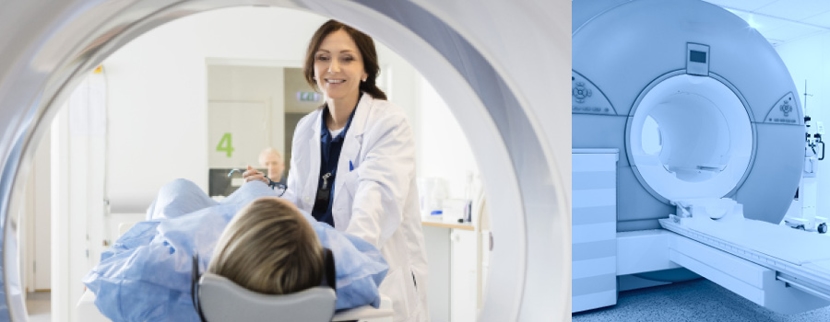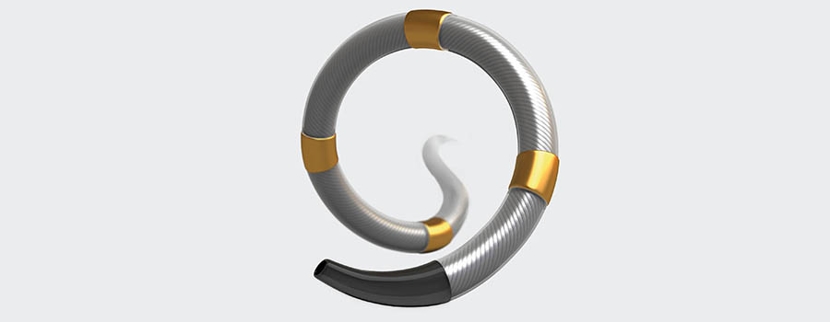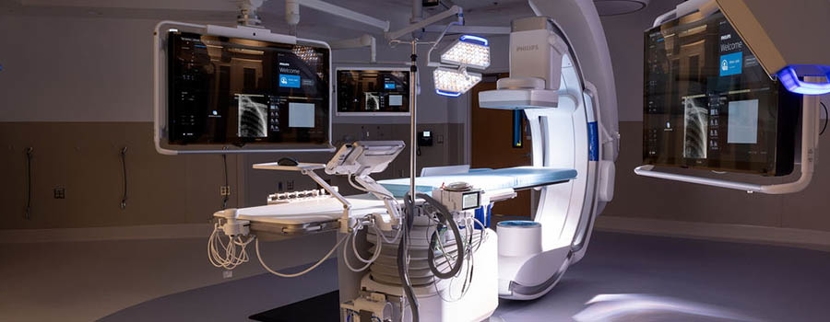Chest Pain Center - Efficient & Lifesaving Treatments
As every cardiologist knows, “time is muscle.” That’s why we make every possible effort to expedite care for suspected heart attack patients. We were among the first hospitals in the nation to use paramedic rigs to perform remote electrocardiograms for earlier diagnosis and faster, more effective treatment. In addition, our Emergency Department staff is exceptionally well trained and focused on chest pain syndromes.
Our Haynes Cardiovascular Institute's accreditation as a Chest Pain Center with percutaneous coronary intervention (PCI) means we exceed stringent guidelines established by the American College of Cardiology and the American Heart Association to rapidly assess and treat patients using catheterization techniques. This procedure eliminates blockages and reestablishes blood flow to the heart, limiting the extent of injury to the heart muscle.
What Causes a Heart Attack?
Atherosclerosis, plaque buildup that hardens and narrows the arteries, reduces blood flow, and can lead to the formation of dangerous clots Causes that do not involve atherosclerosis, including arterial spasm (a sudden contraction in a heart artery), sudden dissection (or tear) of a heart artery, or sudden stress, also known as broken-heart syndrome.
Heart Attack Warning Signs
The symptoms of coronary disease and a heart attack can be very different in women than in men. While many people expect heart attack pain to feel like a crushing sensation in the chest, women’s symptoms may be dangerously vague. A woman might complain of stomach pain, nausea, dizziness, or sudden anxiety. This can lead to dangerous delays in seeking treatment. If you have unexplained chest pain lasting more than a few minutes, you should seek emergency medical assistance.
Common Signs of Heart Attack in both Men and Women
- Uncomfortable pressure, fullness, squeezing, or pain in the center of the chest that lasts more than a few minutes or goes away and comes back
- Pain that spreads to shoulders, neck, or arms
- Chest discomfort with lightheadedness, fainting, sweating, nausea, or shortness of breath
Common Signs of Heart Attack in Women
- Stomach or abdominal pain, or unusual chest pain
- Nausea, dizziness, or a feeling of heartburn (acid indigestion)
- Shortness of breath and difficulty breathing
- Unexplained anxiety, weakness, or fatigue
- Palpitations, cold sweat, or paleness
Types of Heart Attacks
STEMI
ST-segment elevation myocardial infarction (STEMI), sometimes referred
to as a “massive heart attack,” is a life-threatening heart
attack in which a coronary artery is completely blocked. This means a
large part of the heart muscle is immediately deprived of blood and oxygen.
The term “ST-segment elevation” refers to a specific pattern
doctors seen on the EKG when a patient suffers this type of heart attack.
Treatment requires immediate restoration of blood flow, either through
clot-buster drugs or, more effectively, angioplasty (where balloons and
stents are used to open a blocked artery with minimally invasive techniques).
When the blockage causing a heart attack is at the origin of the left anterior descending (LAD) artery, the heart attack is sometimes called a “widow maker.” That is because the LAD is a major pipeline of blood to the heart, making it a particularly dangerous place to get a clot. A blockage at this location causes rapid, serious damage and is often fatal unless blood flow is quickly restored.
NSTEMI Heart Attacks
NSTEMI is an acronym for non-ST-segment elevation myocardial infarction.
This type of heart attack does not register as a change in the ST segment
elevation on an electrocardiogram. Blood flow from the affected artery
is severely restricted but the blockage may be partial and/or temporary.
Patients suffering a suspected NSTEMI heart attack are given a blood test
for a protein called troponin, which is released when there is damage
to the heart muscle. People suffering an NSTEMI heart attack are also
often treated with angioplasty.
Silent Heart Attack
A silent heart attack is a heart attack with mild or no symptoms. They
are more common in patients with diabetes, and happen to women more often
than men. Some people don’t realize anything happened until their
healthcare provider diagnoses heart damage, months later. Silent heart
attacks account for about 20 to 40 percent of all heart attacks and are
linked to an elevated risk of heart failure and stroke.
Coronary Artery Spasm
Sometimes called “variant angina”, coronary artery spasm refers
to a tightening or spasm, of coronary artery walls that reduces or even
cuts off blood to the heart. Often, the affected arteries appear normal
and have not been hardened by plaque buildup, although coronary artery
spasm can also occur in arteries with atherosclerosis. Coronary artery
spasm is an intermittent condition that may not show up in an angiogram.
Treatment consists of medications such as nitrates and calcium channel blockers.
Cardiac Arrest (Not a Heart Attack)
Cardiac arrest refers to when the heart suddenly stops beating. While that
can occur as the result of a heart attack, cardiac arrest may also be
due to other issues such as a fatal heart rhythm, which can come from
electrolyte disturbances, structural abnormalities of the heart, or poor
pumping function. In a heart attack, the heart continues to beat, although
it can cause life-threatening arrhythmias that quickly lead to cardiac
arrest. The initial treatment for cardiac arrest is CPR and defibrillation
to get the heart to start beating again.








